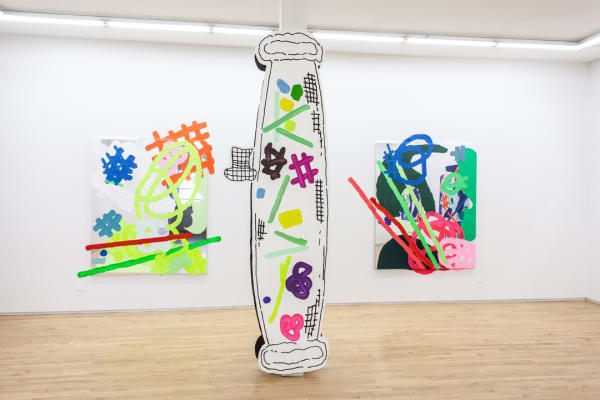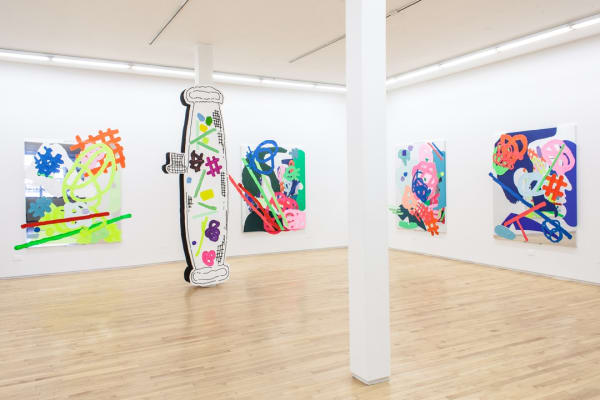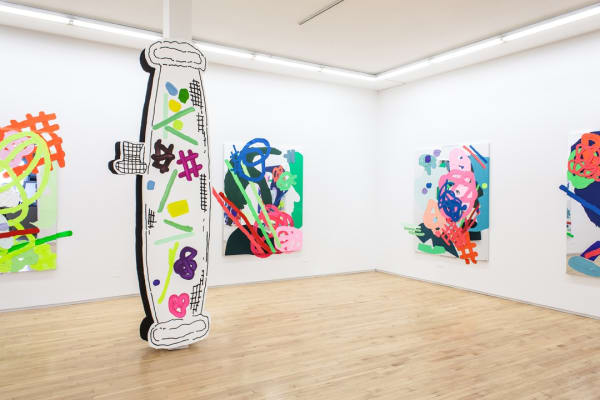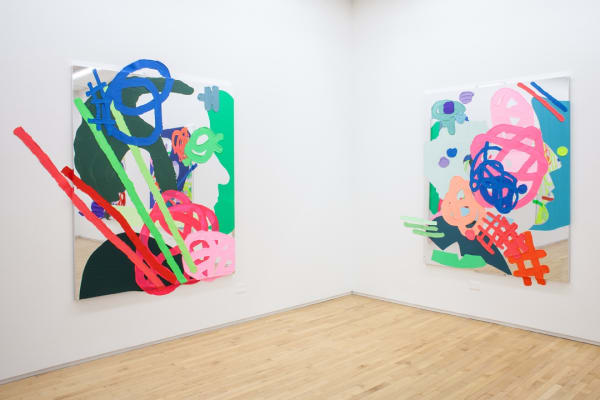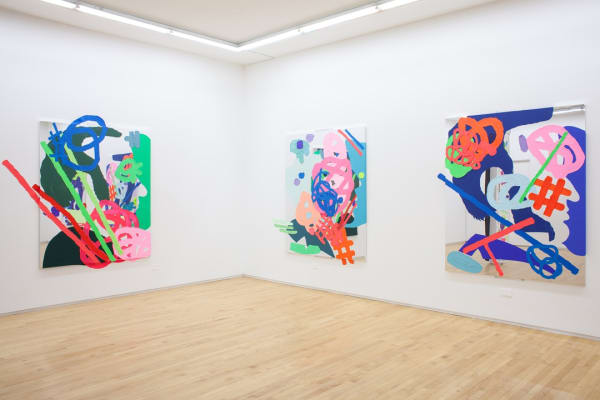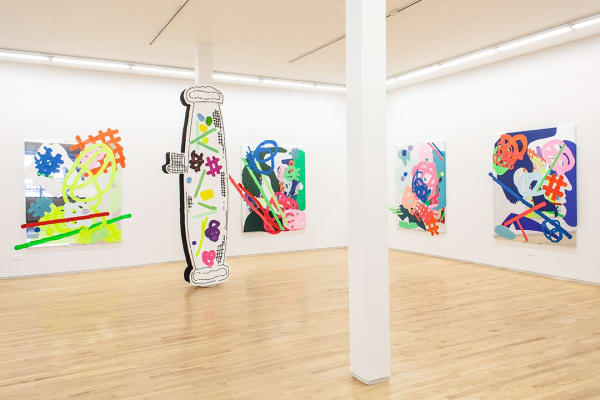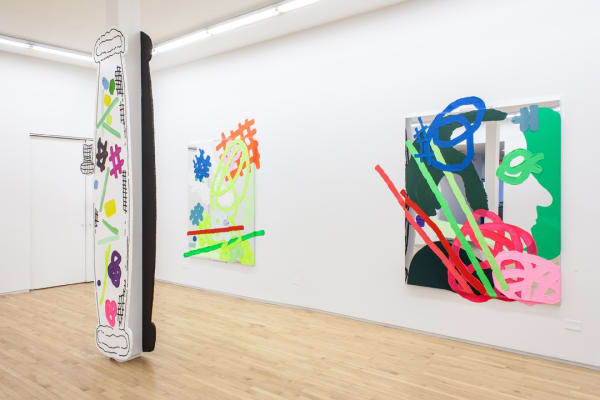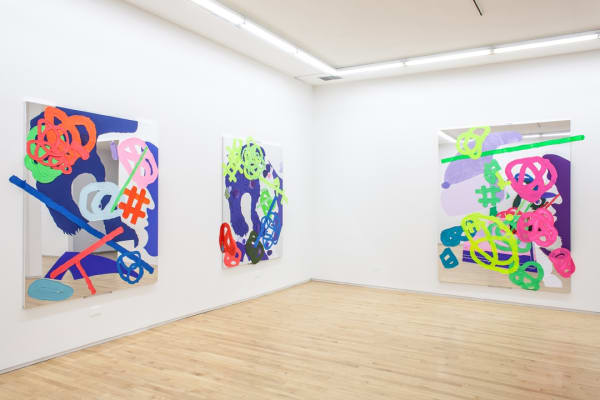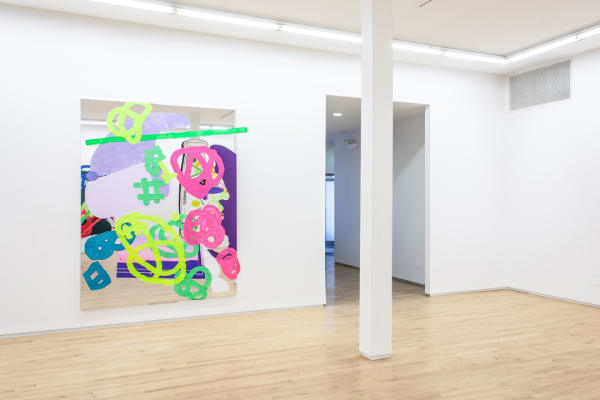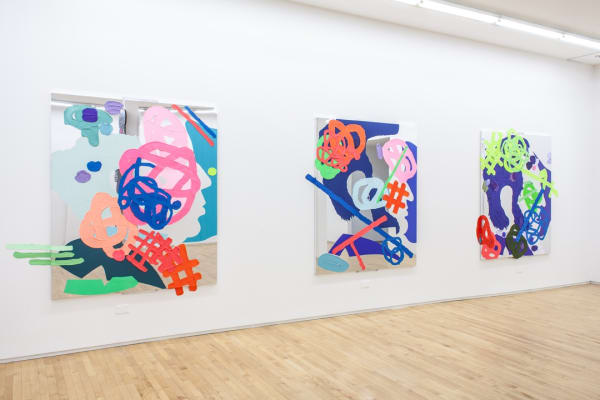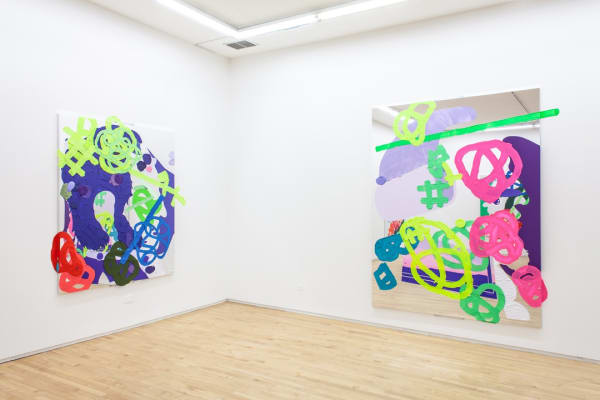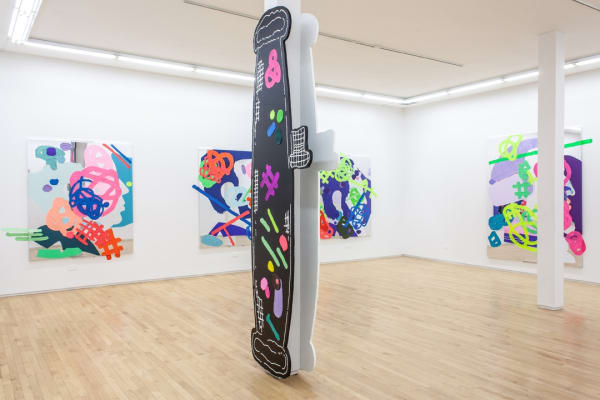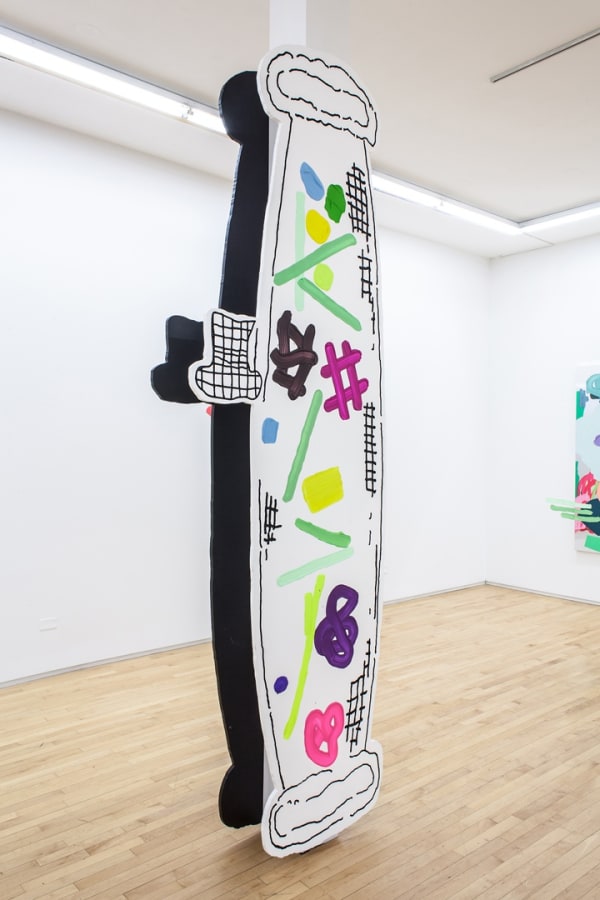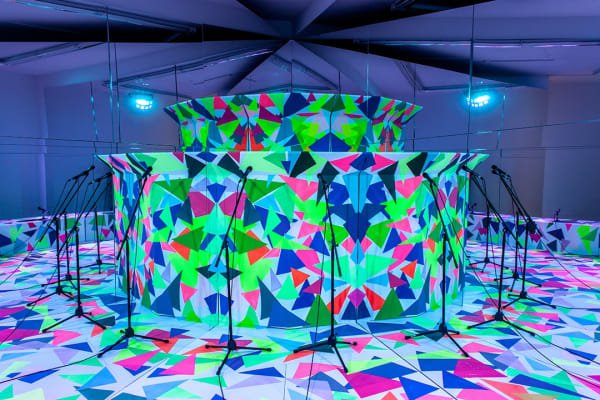José Lerma, Gloriosa Superba: Kavi Gupta | 835 W. Washington Blvd. Chicago, IL, 60607
Kavi Gupta is proud to announce its first solo exhibition with Chicago based artist José Lerma entitled Gloriosa Superba.
All history is born from a sea of personal narratives. José Lerma’s work finds inspiration from his own autobiography and an interest in long-lost historical figures, a dialogue that he chooses to have within the context of painting and painting’s relationship to history. Portraiture as an artistic genre has a long-standing lineage with memorializing civic and political leaders, communicating narrative through the likeness of a person and adding to that likeness a symbolic stamp of status. It is within this platform or portrait painting and historical significance that Lerma finds windows of opportunity to expand on conversations of contemporary political, economical and civic discussion, creating work that is conscious of how the present is always contingent on the past and how art and history share parallel lines of innovation and progression.
The exhibition, Gloriosa Superba, is titled after the flowering plant named after the Rothschild family, Rothschildiana Gloriosa Superba. The Gloriosa Superba is a climbing plant, which uses its leaves at the base of each flower to attach to other flowers within the same plant in order to grow.
The core of the exhibition consists of seven portraits depicting Mayer Amschel, Guttle Schnapper and their five sons whom left Frankurt Judengasse in the 18th century and established an international banking dynasty and the genesis of the Rothschild Empire. Though rooted within different countries and economies, the five branches of the Rothschild banking system remained connected in a web of joint support and success. Lerma approaches the portraits themselves in a conceptual process similar to this interconnection by painting each portrait on reflective glass-less mirror, with each member of the family initially representing a different color wheel, and building the paintings’ compositions and palettes based on each other’s reflections when the portraits are placed within the same environment. This process results in a spectrum of color within each work in what Lerma calls a display of chromatic incest, a poetic gesture on the collective rise of the family’s economic and political legacy.
Economics are further explored in A Critical Analysis of Central Banks and Fractional-Reserve Banking from Austrian School Perspective, an installation that takes form in the shape of a 10% fraction of a circular fountain which is flanked by mirrored walls. An essay by Spanish economist Jesus Huerta de Soto, from the Austrian School, serves as the inspiration for the work and title. The percentage reflects the minimum requirement of liquid assets the United States’ financial institutions are required to hold by law in order to operate. A Critical Analysis… presents a contrast to the interaction the portraits have with each others’ reflections, instead of borrowing from the impressions of each piece to build on the final compositions, the fountain completes itself through the illusion of a whole in the mirrors, creating a kaleidoscopic effect. The installation is activated through performance in which water sounds are made by participants standing within the structure as sculptural elements of the fountain itself.
Jose Lerma (b. 1971 in Spain) lives and works in Chicago. Upcoming and recent exhibitions include La Bella Crisis (2014), Museum of Contemporary Art Detroit, Detroit, MI; Robusto Parasite (2014), Roberto Paradise, San Juan, PR; BMO Harris Bank Chicago Works: Jose Lerma (2013), Museum of Contemporary Art Chicago, Chicago IL; The Credentialist (2012), Museum of Contemporary Art Raleigh, Raleigh, NC; I am Sorry I am Perry (2010), Andrea Rosen Gallery, New York, NY; El Pendejo (2009), Galerie Loock, Berlin, Germany; Jose Lerma (2005), Xavier Hufkens Gallery, Brussels, Belgium.
-
 José LermaAdios Diablo, 2013Pigmented silicone on glass-less mirror96 x 72 in
José LermaAdios Diablo, 2013Pigmented silicone on glass-less mirror96 x 72 in
243.8 x 182.9 cm -
 José LermaNathan, 2014Acrylic and pigmented silicone on glass-less mirror72 x 60 x 2 in
José LermaNathan, 2014Acrylic and pigmented silicone on glass-less mirror72 x 60 x 2 in
182.9 x 152.4 x 5.1 cm -
 José LermaIvan as Dorimon, 2014Pigmented silicone on stretched Mylar72 x 60 in
José LermaIvan as Dorimon, 2014Pigmented silicone on stretched Mylar72 x 60 in
182.9 x 152.4 cm -
 José LermaJames, 2014Acrylic and pigmented silicone on glass-less mirror72 x 60 in
José LermaJames, 2014Acrylic and pigmented silicone on glass-less mirror72 x 60 in
182.9 x 152.4 cm -
 José LermaSteffi as La Marquise, 2014Pigmented silicone on stretched mylar96 x 72 in
José LermaSteffi as La Marquise, 2014Pigmented silicone on stretched mylar96 x 72 in
243.8 x 182.9 cm -
 José LermaA Pillar of Exchange II, 2014Acrylic and pigmented silicone on wood119 x 37 x 1 in
José LermaA Pillar of Exchange II, 2014Acrylic and pigmented silicone on wood119 x 37 x 1 in
302.3 x 94 x 2.5 cm -
 José LermaA Critical Analysis of Central Banks and Fractional-Reserve Banking from the Austrian School Perspective, 2014Acrylic and pigmented silicone on carpet11 H x 22 x 21 x 12 ft
José LermaA Critical Analysis of Central Banks and Fractional-Reserve Banking from the Austrian School Perspective, 2014Acrylic and pigmented silicone on carpet11 H x 22 x 21 x 12 ft









